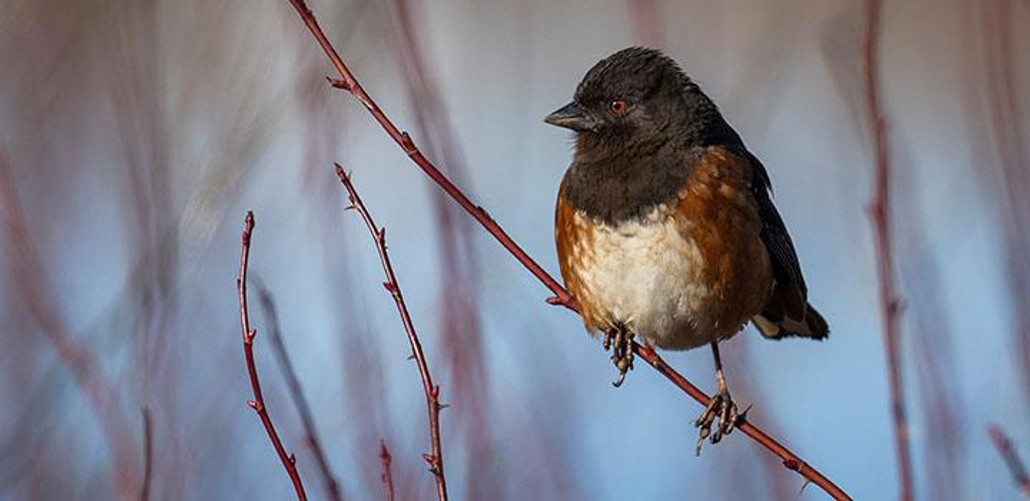
Spotted Towhee
Posted by Grange Co-op on 23rd Dec 2014
Spotted Towhee: Sporting a dark hood, back and wings contrasting with bright rufous (red-brown) sides and white belly, multiple white spots on wings and sides, long dark tail with white tip, rich red eyes, dark bill, pinkish legs and long claws.
Male: Upper parts and tail are black.
Female: Upper parts and tail are dark brown
 NESTING:
NESTING:
Nest is a cup of leaves, strips of bark, grasses and twigs, lined with fine grass and hair placed low in a shrub or more often in a scratched depression on the ground under brush. Female incubates 3-5 eggs which are creamy with brown spots. During egg laying and incubation, the male rarely comes near the nest and the female is quite secretive. Both parents feed the nestlings.
FEEDING:
Hops backward with both feet, raking up leaf litter in search of food. Eats insects, spiders, lizards, snakes, weed and grass seeds and wild berries. Comes to feeders for seed found on the ground, primarily white proso millet.
RECOMMENDED FEED:
Rogue Dove and Quail, Rogue Select. Shop Wild Bird Food.
RECOMMENDED FEEDERS:
Ground trays. Shop Wild Bird Feeders.
HABITAT:
The Towhee is a common year-round resident west of the Cascades and locally common breeding summer resident and locally uncommon migrant and winter resident east of the Cascades. It can be found in a variety of brushy habitats, including open woods with a shrub understory, thick brush and chaparral, and suburban backyards.
OTHER INTERESTING FACTS:
The distinctive “chewink” or “chweee” call note of both sexes is a good clue to their presence. Scratching for food in the underbrush, hopping backwards with both feet, can make such a ruckus that most people hearing it expect to find a squirrel instead of the Spotted Towhee. It likes tangled thickets and overgrown gardens, especially if blackberries are ripe for the taking.
COMPARE TO:
Closely related to the Green-tailed Towhee which looks nothing like the Spotted Towhee, being yellow-green and gray with an orange-red crown. Sometimes it can be confused with the American Robin which is larger, with gray upper parts, reddish orange under parts and no spots on wings.
Would you like to attract birds to your yard? We’ve got a great selection of products to help you and your feathered friends get together. Shop our Wild Bird department now.
